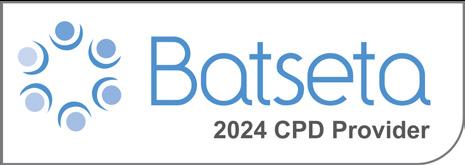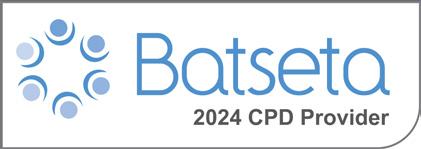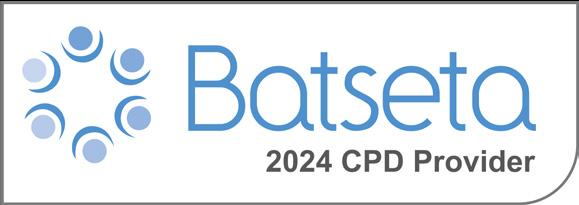www.atleha-edu.org Atleha-edu Speaking life into investment decisions INVESTMENT FUNDAMENTALS RETIREMENT SAVINGS in South Africa ACTIVE versus passive funds FINANCIAL ADVISORS and your retirement fund PART 3 VOL.18 funded by ALSO IN THIS ISSUE: RETIREMENT SAVINGS, SARS AND ME | CURRENT STATE OF RETIREMENT SAVINGS IN SOUTH AFRICA RETIREMENT PLANNING MISTAKES | TYPES OF RETIREMENT PRODUCTS




INVESTMENT FUNDAMENTALS WORKSHOP
This workshop consists of two sessions of three hours each and provides retirement fund trustees and principal officers with an overview of investment fundamentals within retirement funds. The topics covered include the South African economy, major asset classes, financial markets, risk-return dynamics, and portfolio construction in the context of Regulation 28 of the Pension Funds Act.
WORKSHOP LEARNING AREAS
This workshop is offered on a fully funded basis to South African Trustees and Principal Officers. To non-trustees who wish to attend this workshop, a fee of R1,900 Excl. VAT will be charged.
B R O C H U R E E N R O L N O W T H E L E A R N I N G A R E A S O F T H I S C O U R S E A R E : T h e R e t i r e m e n t F u n d I n d u s t r y a n d s a v i n g s l a n d s c a p e i n S o u t h A f r i c a R E T I R E M E N T F U N D T R U S T E E E D U C A T I O N W O R K S H O P S
Accredited CPD provider for the Batseta Council for Retirement Funds
The South African economy Asset classes Financial markets Risk and return Portfolio construction
Regulation 28 of the Pension Funds Act Click here to download a brochure with detailed content and delivery approach Click here to enrol for this this workshop
and

04 SARS, retirement savings and me 06 Why financial advisors are important for your retirement planning CPD Quiz 12 08 Top 10 retirement planning mistakes 14 18 CONTENTS 02 Current State of Retirement Savings in South Africa Active vs passive funds and your retirement portfolio Types of retirement products Please visit www.atleha-edu.org or email us at info@atleha-edu.org to find out more about our educational publications, resources and workshops. You can also call us on 021 851 0091. All references in our articles are clickable. If you received this publication as a printed copy, you can access the reference by typing the name of the source and the title of the article in a search engine on the web. www.atleha-edu.org Atleha-edu Speaking life into investment decisions 1
CURRENT STATE OF RETIREMENT SAVINGS IN SA
South Africa is a complex country, whose fractured history begins to emerge the moment you tap into the question of retirement savings.
Just the mention of retirement savings often triggers an emotional binary response between those who have prepared for life after 65 and those who have not. And importantly, as is the focus of this article, their reasons why.
What is often lost in the well-cited data points about South Africa’s poor savings culture is the reason why saving is hard, why retirement is too distant a future to worry about, and why educating yourself on what it means to prepare for retirement often seems like drudgery; until retirement and its realities hit you quite literally, with a thud.
We want to assess the responses of ordinary South Africans towards their retirement planning. Hopefully, in showing you the human story of retirement savings, wherever you fall on the savings spectrum, you too will discover that no matter what deck of cards life has dealt you, you can change your retirement prospects by simply educating yourself and then doing something about it.
Retirement Savings - The Harsh Reality
The beauty of data and empirical research is that upon first reading, it's not personal.
However, when data is laid bare, a story that locates many individuals within a bigger context emerges from the numbers. And then the data suddenly becomes a reading of your story, which becomes a trend and these trends become statistics.
To help you navigate the complex world of retirement savings, help is at hand!
With a number of user-friendly handy platforms like, Smart About Money from Asisa (Association of Savings and Investment South Africa) to MyMoney from the FSCA to Alex Forbes' My Money Matters Toolkit - there is a wealth of retirement resources available to you, so that you can successfully start your investment journey.
Here is an interesting snapshot of retirement savings in South Africa as of 2023/2024. The following data was collected from the 10x Retirement Reality Report 2023/24, and the Sanlam LI:FE of Confidence and News24 survey on retirement savings.
Putting Food on the Table
In the year 2019, half of the adult population of South Africa (49,2%) was living below the poverty line.
StatsSA’s recent calculation (August 2022) of the upperbound poverty line for individuals was an income of R1 417 per month.
2
The March 2023 cost of a basic nutritional food basket for a family of four was R3 430 (Household Affordability Index, March 2023). This means that even in dual-breadwinner households, parents are not earning enough to provide the nutrition their families require.
Extrapolating this further it becomes clear from these sobering numbers that retirement saving and planning are a near impossibility for many South Africans.
Women and Retirement
The trends of women and their retirement savings paint another contextual picture in our South African socioeconomic story.
There are 14,3 million employed people in South Africa, out of a population of approximately 60 million.
LACK OF RETIREMENT EDUCATION
struggling with a high concentration (42,2%) of femaleheaded households. The province with the highest percentage of female-headed households is the Eastern Cape with 49,6%.
The majority (44,1%) of South African children under 18 years of age live with their single mothers, compared to a third (32,7%) who live with both parents and 19,5% who live with neither of their parents, and 3,7% live with their fathers.
South African single mothers are therefore, statistically, the sole largest providers for nearly half of the country’s children under 18. Given the economic strain these mothers are under, it isn’t surprising that 49% of all female respondents of a recent Sanlam / News24 survey indicated that they do not have a retirement plan, compared with 43% of men.
The Elderly and Retirement
An overreliance on the state pension has been cited as one of the biggest mistakes South Africans make when it comes to their retirement savings.
However, despite the call to diversify retirement income, the reality remains that 73% of South Africa’s elderly population are beneficiaries of the state old-age grant. Without these monthly payouts, these elderly people cannot afford to live.
1. Only one-third of South Africans have a relatively solid grasp of what it will require to fund their retirement years.
2. Only 36% of South Africans have a retirement fund.
3. Only 7% of South Africans feel prepared for retirement. 1/3
LACK OF RETIREMENT SAVINGS
Combined with this, 53% of these people aged 60+ live in extended households, where they are likely to receive and will require some psych-social and emotional support. So, the reality of the “sandwich generation” is hitting South African adult children as they are forced to look after their ageing parents as well as their own growing children.
*Sandwich generation meaning: Middle-aged adults (often in their 40s and 50s) who are caring for both elderly parents and their own children.
The Way Forward
While the numbers paint a grim picture of the realities many South Africans face when it comes to saving for their retirement, it sadly does not absolve us from the responsibility of making provision for our retirement, no matter where we find ourselves on the savings spectrum.
1. Two-thirds of South Africans are either not saving at all for retirement, or their retirement planning is vague
2. Of those whose retirement plans were vague, they gave the response of “I cannot afford to save” and “I have nothing left at the end of the month” as reasons why they have not started saving towards their retirement. 2/3
Of those who work, only 6,2 million (43%) are women.
Of these working women, 4,15 million (67%) are in formal employment, with the balance located in the following sectors:
15% are in informal employment, 4% are working on farms and 14% are employed as domestic workers.
The story gets interesting as South Africa is also
Given this data, it becomes imperative to position our retirement story within the broader context of many South Africans and decide, where possible, where we want to make positive differences for the sake of our long-term future.
REFERENCES
https://mymoneymatters.alexforbes.com
• News24 and Sanlam LI:FE of Confidence Survey 2023
• SA’s retirement time bomb, not getting any better - Ciaran Ryan, Feb 2024 Moneyweb
• Sandwich Generation - Investopedia: Will Kenton, Ebony Howard July 2022
• Statistics SA’s General Household Survey 2022 (GHS 2022), published in August 2023 and Marginalised Groups Indicator Report 2021 (MGIR 2021), published in February 2023, reveal to what extent South Africans depend on their women, and also the ongoing disparities between men and women.
3

SARS, RETIREMENT SAVINGS AND ME
For many South Africans, just the mention of SARS (South African Revenue Service) leaves them with a real sense of dread. Dread of potentially missing a tax contribution deadline, dread of the potential need to actually pay SARS an outstanding penalty, and the dread of SARS contacting you in the first place.
But surprisingly, for all the appropriate and measured dread and our suspicious resistance to the beloved taxman, SARS does have your proverbial back - especially when it comes to your retirement savings. In fact, the tax system has been engineered with tools to help ordinary South Africans save for their retirement in innovative ways that belie our deeply entrenched fears.
So, perhaps it's time to change our paradigm from dread to delight, because what we are about to share with you just might convince you otherwise. Let’s lift the lid on two SARS-approved retirement saving interventions that may very well surprise you and, in turn, have you laughing all the way to the bank when you are 65!
The magic of Retirement Annuities
One of the top retirement investment vehicles that also provides a tax-efficient way to save for your retirement while actively managing your money, is a retirement annuity (RA).
This financial instrument enables you to access numerous retirement saving tax incentives, while also facilitating the reduction of your annual tax liability.
Here is a simple explanation
Every rand you save yearly in a retirement annuity is tax-deductible. This amount is allowed to grow tax-free until your retirement. This tax value is calculated at 27,5% of your annual taxable income, up to a maximum of R350 000. (Any contributions above the annual limit can be carried over to future tax years, where it can be used as a deduction, subject to the annual limits.)
ALet’s apply this tax incentive to Sipho’s salary:
1. Sipho earns R650 000 taxable income per year.
2. He decides to open a retirement annuity and make regular contributions to it.
3. The maximum tax-deductible contribution Sipho can make towards his retirement savings would be R178 750 (27,5%) per tax year.
4. At the end of the tax year, given that Sipho made the maximum contribution, his tax liability to SARS would be calculated on R471 250 (R650 000 - 27,5%), instead of R650 000.
5. Sipho’s annual taxable income is now reduced because he has made monthly contributions towards his retirement by simply saving with a retirement annuity.
Reduced Income Tax
SARS is literally reducing your annual tax liability because you have chosen to start saving for your retirement! Your taxable income can decrease by the amount you save for retirement. This means you can move yourself into a lower tax bracket by saving for your retirement, which means you not only save the tax on the money you put in your RA, but you could also be paying less tax on all your other income.
4
BRAs are a win for tax-efficient estate planning
The cash contributions that accumulate within your RA make it ideal for estate planning.
Let's take a look at some of the benefits offered by your RA:
1. Your RA does not form part of your estate and therefore no estate duty is payable on the investment or the growth of the RA investment.
2. The investment growth of the RA is protected from creditors.
3. You will pay no tax on the dividends or the growth you receive from the money invested in the RA.
Investing in an RA quite literally saves you tax, both in life and in death. Retirement annuities also provide payment flexibility and the ability to choose the underlying assets in which you wish to invest. Whether formally employed or self-employed, you can take out an RA that will provide a welcome buffer and protection tool for your retirement savings.
A little note on Life Wrappers
If you are new to the world of RAs, here is a word of caution on investing in an RA.
Avoid taking out an RA with a life wrapper, which is often offered by life insurance companies. The reason being that they are notoriously rigid, expensive and charge penalties when your premiums are reduced or stopped. Their fees are also prefunded, which means a large portion of your contributions for the first three to five years goes towards funding fees.
Tax-Free Savings Accounts a tax saving goldmine
As the saying goes, you are only as good as the information you know. The same is true for Tax-Free Savings Accounts (TFSA) if you don’t know what they are, you will never know what they can do.
TFSAs are the next weapon in your arsenal of taxefficient tools. Saving for your retirement becomes much easier because they offer, as the name suggests, tax-free savings.
By way of illustration, if you have ever had to pay tax on a lump-sum cash withdrawal, you will remember all too well the sinking realisation that a juicy portion of said sum had an obligation to march to SARS to fulfil its tax requirements.
A TFSA provides the perfect vehicle for long-term savings because, provided you saved within the limitations of your monthly and lifetime contribution requirements, you will be able to withdraw the full amount without paying a single cent in tax when you retire. Now that is good news!
Here is how it works:
• Your annual contribution to a TFSA may not exceed R36 000 per annum.
• Your lifetime contribution to a TFSA may not exceed R500 000, as defined by SARS.
• This gives you a saving / investment horizon of 14 years (this is an important point of consideration).
TFSA accounts are good if:
1. You have not started saving for your retirement yet; and 2. Believe you don’t save or have not saved enough.
These TFSA can be made up of a combination of local and offshore unit trusts.
According to Alex Forbes, whether you are saving for your children's education or a dream holiday, the tax-free savings account is a simple, flexible, affordable investment to save towards your goal.
Tax benefits of a TFSA
With a TFSA you will pay no capital gains tax or dividends tax. However, it is important to consider your liquidity requirements if you need your cash within five years, perhaps a TFSA is not ideal. But if you can invest for the longer term, you will also benefit from compound interest. The longer you don’t touch your investment in your TFSA, the more interest you will earn, and when it's finally time to cash out it will be tax-free!
With a wide range of tax incentives available to South Africans to start saving towards their retirement, the best time to begin is today. With as little as R500 per month and a little patience, knowledge, and a willingness to shift the needle from retirement-panicked to retirement-ready, the horizon of 65 will be a milestone you’ll be empowered to reach.
REFERENCES
• Alexforbes - Tax-free Savings Account A quick guide: How to make the most of tax allowances on your retirement savings each year - Robyn Laubscher, Advice and Product Specialist PSG Wealth. FA News, 25th January 2024.
• Five things to consider for maximising your tax-free savings account- Investec, My Money Focus Podcast - 27 January 2023
• Structuring a tax-efficient retirement and savings plan- Wouter Fourie, Ascor Independent Wealth Managers.
• At 38, what’s the best way to save for retirement? - Marius Fenwick, Moneyweb - 2 August 2023.
• Eight Reasons Why an RA Is a Good Idea - Sanlam
5
RETIREMENT PLANNING MISTAKES
Miscalculating inflation
2 1 3 4
A significant oversight is underestimating how inflation erodes the purchasing power of money over time. Failing to account for inflation can lead to a substantial reduction in the real-value of your retirement savings.
Underestimating life expectancy
It is hard to predict life expectancy. However, underestimating how long you’ll livecould result in you outliving your savings. It's crucial to plan for a longer retirement to ensure financial security.
Investing conservatively
While preserving capital is important, being overly conservative with investments can hinder growth. Finding a balanced approach that considers risk tolerance and return potential is key.
Underestimating healthcare costs
Healthcare costs can escalate during retirement. Neglecting to take care of potential healthcare costs, could jeopardise financial stability. A comprehensive retirement plan should incorporate healthcare costs.
TOP
10
6
5 6 7 8 9 10
Core expenses at retirement should be divided into 3 pots:
1. Core expenses - total coverage for your day-to-day retirement expenses.
2. Preferred expenses - expenses you desire to make but which are not central to your daily living.
3. Ad hoc expenses - coverage for a medical shock, an overseas holiday or a large purchase, all of these are financed through this cash reserve.
Lack of retirement education
A common mistake people often make is not getting educated early enough about retirement savings. This delay causes you to miss out on the value of compound interest. Delays of 10 - 15 years can have a significant impact on future investments.
Early withdrawal of retirement savings
Try to avoid taking out your preservation/pension fund early as there are tax implications when you resign or leave. This money could be saved to grow into a retirement fund to avoid high tax penalties.
No long-term savings
Living beyond your means. Many South Africans are dependent on credit for basic living amid the challenging economic climate.
Reliance on government pension
Too many South Africans assume the government will cover all their retirement needs. If you think like this, you will be in trouble and have a rude awakening.
Not consulting a financial advisor
Many South Africans rely on the internet, or friends to guide them with their retirement savings plans. It is vitally important to look for financial expertise, combined with your own research when planning for your retirement. Expert advice is not always expensive.
• Alexforbes - Other financial matters • Visual Capitalist - Charted top 10 retirement planning mistakes • Client Care Lifestyle Financial Planning - Top 10 retirement mistakes • Business Tech - Biggest Retirement Mistakes in South Africa Discovery Your Money Matters Podcast - Episode 5: From Pageant Queen to Property Dream REFERENCES
Miscalculating core expenses
7
TYPES OF RETIREMENT
PRE-RETIREMENT
‘The perfect tools to help you start saving’
GOAL: BUILD WEALTH AND SAVE FOR RETIREMENT
not subject to
gains. 1. When you leave your retrenched or dismissed. 2. Encouraged to transfer employer or into preservation retirement annuity.
1. Not allowed to access following exceptions:
• Total balance of
• You must retire early permanent disability.
1. When you leave your retrenched or dismissed. 2. Encouraged to transfer employer or into provident or a retirement annuity. Retirement Annuity
• You have been a purposes for a period years.
TRANSITION
‘Future-proof
your retirement strategy by consolidating and protecting your investments.’
GOAL 1: CONSOLIDATING RETIREMENT SAVINGS GOAL 2: PROTECT
After the annual assessment of your retirement savings portfolio, now it is time to consolidate the number of working years you have left and the contributions you can make towards your retirement.
Ensure that you are fully withdrawing your retirement at your estate planning implications of payouts
Contributions Tax Efficiency Access Pre-retirement Pension Fund
1. Contributions tax-deductible. 2.
1. Contributions tax-deductible. 2. Returns not subject to capital gains.
Contributions split between you and your employer.
Returns
capital
Provident Fund Contributions split between you and your employer.
1. Contributions tax-deductible. 2. Returns
capital gains.
Contributions solely your responsibility.
not subject to
8
RETIREMENT PRODUCTS
18-55 years old
Pre-retirement Access Post-retirement
your employer; resign; are dismissed.
transfer pension to new preservation fund or
your employer; resign; are dismissed. transfer pension to new provident preservation fund annuity.
access RA unless for the exceptions: RA is R15 000; early due to ill health or disability. non-resident for tax period of 3 uninterrupted
1. Leave 2/3 of investment amount in an incomegenerating annuity.
2. Take 1/3 of investment out as a lump sum (The first R550 000 you withdraw from your retirement fund – over your lifetime – is tax-free.)
3. If the total benefit in the fund is R247 000 or less, the member may take the whole benefit in a lump sum.
1. Leave 2/3 of investment amount in an incomegenerating annuity.
2. (The first R550 000 you withdraw from your retirement fund – over your lifetime – is tax-free.)
1. Leave 2/3 of investment amount in an incomegenerating annuity.
2. Take 1/3 of investment out as a lump sum (The first R550 000 you withdraw from your retirement fund – over your lifetime – is tax-free.)
55-65 years old
fully aware of the tax implications of retirement savings upon retirement. Take a look planning and make sure all beneficiaries and tax
are considered.
saving’ PROTECT RETIREMENT SAVINGS
consolidating
9
payouts
GOAL: PROTECT RETIREMENT SAVINGS
RETIREMENT RETIREMENT CHECKLIST

1. Income generated in living invested.
2. You will be able to choose amount.
3. Upon death, the remaining paid out in one lump sum,

Contributions Income upon death Guaranteed Annuity 1. 2/3 of your total pension, provident, endowment or RA fund invested at 65 years old into the income-generating annuity.
guaranteed Living Annuity 1. 2/3 of your total pension, provident, endowment or RA fund invested at 65 years old into the income-generating annuity.
‘Create a retirement expenses list of 3 categories. This will protect you against shocks
1. Provides you with a guaranteed 2. Upon selecting a payment until the expiry of this
Blended Annuity You can also invest in a blended annuity. This means you
• Discovery Retirement Planning • Nedbank Private Wealth - How do different retirement funds compare • Alexforbes - Get the most out of your retirement fund and savings REFERENCES Core expenses Preferred expenses 1. Total income coverage for your day-to-day retirement expenses: Accommodation, food, transport, medical expenses. Income required for desired, but not essential, retirement expenses. (Travel, hobbies, gifts) 10
split your savings between living and
65+ years
old
guaranteed regular income for a defined period during your retirement. payment term for your guaranteed annuity, you may also appoint a nominee to receive the income guaranteed term, in the event that you pass away before the term expires.
living annuity not guaranteed but relies on the performance of the fund in which the capital is
choose how much money you take as income, based on a predetermined minimum or maximum
remaining underlying value of the living annuity can be left to beneficiaries. The death benefit can be sum, transferred to another living annuity / guaranteed life annuity or a combination of both.
and guaranteed life annuity products.
shocks in the future.’

• Unexpected medical shock expenses
• Overseas holiday
• Large cash purchases
Ad hoc expenses
retirement Coverage for:
11
ACTIVE VS PASSIVE FUNDS AND YOUR RETIREMENT PORTFOLIO
The process of structuring your retirement savings portfolio is an exciting step towards taking control of your financial future.
With a wide range of savings products available to you, educating yourself becomes important as you create a retirement portfolio that will deliver healthy, competitive investment returns.
Two terms you will come across in your retirement savings journey are active and passive investment funds. Understanding the distinction between these
Active Funds
Active funds require frequent and ongoing active management by portfolio managers.
This active management typically involves teams of research analysts and portfolio managers who offer a hands-on service that includes monitoring and evaluating the funds you are invested in and making important investment decisions on your behalf.
The reason many opt for active fund management of their retirement savings is because the objective of active funds is to create alpha; creating alpha means to always seek higher returns than the market average.
In order to accomplish alpha, portfolio managers select the best investment teams who can stock-pick, evaluate and act on mispricing in the market. These teams identify misvalued securities (shares) and execute timely buying and selling decisions, giving the investor the advantage of a hands-on investment service that should, in an ideal world, beat the overall performance of the market.
Given the human capital required, active funds often come with hefty investment fees, which if you do not understand the nature of compounding over time, can erode the total capital you will receive at retirement.
two types of funds can make a critical difference in the outcomes of your retirement savings.
Depending on your risk profile, investment sophistication and investing time horizon, it will be important for you to judge the merits of active and passive funds and make an informed decision regarding how you wish to structure your portfolio.
12
Passive Funds
Passive funds, as the name suggests, do not require any active management at all. They track a specified benchmark over time. For example, you can invest in a passive fund that tracks the FTSE/JSE Top 40 Index. This Index reflects the performance of the top 40 largest companies on the Johannesburg Stock Exchange by market capitalisation.
Passive multi-asset funds target strategic asset allocation. The argument for passive funds is that diversification and index tracking have proven to deliver higher returns over the long term with lower costs than those of active funds. There are a number of local passive investment options that also track global indices. This helps prevent overexposure to an exclusively South African selection of passive indices, thus promoting a high level of global diversification within your portfolio. Where active funds argue that share prices are often
Conclusion
Both active and passive funds can find a place in a welldiversified portfolio.
Your overall strategy becomes important within a passive fund as these funds adopt a buy-and-hold strategy. You will have to decide when and how to reposition your exposure, whereas with active investing it's done for you by the portfolio manager.
While it is true that most active fund managers have failed to outperform their passive counterparts consistently, there are success stories to be found.
misvalued and therein lies the opportunity for excess return, passive funds work on the assumption that the share price is already trading at fair value. In terms of this theory, generating alpha by utilising the skill of portfolio managers or investment strategies becomes an impossible pursuit of returns, so rather passively holding shares over the long term becomes the strategy.
By investing in passive funds your portfolio typically gets an appropriate level of diversification, with low turnover, which is excellent for keeping down transaction costs. This combined with low fees makes passive funds appealing for investors wishing to incorporate them into their portfolio.
Conducting a careful and detailed analysis and selecting active managers based on merit become critical.
When approached with the right strategy, active management has the potential to deliver above-market returns; however, scrutinising fees becomes important as you select an active manager. It is wise to consider your investment objective before making a decision.
REFERENCES
• Passive Management, Wikipedia
• The difference between active and passive investing- Lisa Stride, Fabrice Muhizi, Investec Unpacking Wealth Creation Podcast, 8 December 2023
The active vs passive fund debate: Which is best? - Marius Fenwick, Wealth-Up Moneyweb, September 2021
• Retirement Reality Report 2023/4
13
WHY FINANCIAL ADVISORS ARE IMPORTANT FOR YOUR RETIREMENT PLANNING
Congratulations! You have decided to take ownership of your financial future by seeking the guidance of a financial advisor.
While you might be new to the world of investing and financial planning, seeking the expert guidance of a financial planner is an important step in helping you to personalise your financial planning. An advisor can provide investment guidance and portfolio management, and assist with tax and estate planning, while also providing behavioural coaching and emotional support.
Seek expert advice
A financial advisor will become your financial coach. He/She will work closely with you to tailor a retirement strategy for your goals and aspirations. His/Her expertise and advice are invaluable because financial advisors are qualified and board FSCA / FSP certified to assess your current financial position and help structure a plan that will enable you to achieve your goals.
Financial advisors possess a deep knowledge of a wide range of financial products, investment strategies, tax laws and estate planning techniques that will help take the guesswork out of trying to figure out these complex details on your own.
Selecting the correct financial advisor for you is a process of verifying his/her qualifications and ensuring there is alignment with your goals. Fundamentally, you should respect and value each other to embark on what can be a 10- to 35- year investment journey.
A financial advisor who is independent, provides fee-based services and is not incentivised to sell certain products but is motivated to provide the best possible service, is the one you are after.
14
Investment guidance and portfolio management
Once you understand the language of investing, it becomes a joy to watch your wealth grow over time. But before you reach that point of understanding, it can all seem very intimidating.
Help is at hand in the form of a financial advisor who is equipped to offer valuable investment guidance to help you navigate the complexities of the market.
He/She will assist with key functions such as asset allocation, diversification of your portfolio and how to select the appropriate investment vehicles. When you use
a financial advisor you are paying for a service that should benefit you and should include monthly or quarterly reporting, ongoing portfolio management, and the ability to rebalance your portfolio risk and exposure.
Tax and estate planning
Effective tax and estate planning when structuring your retirement portfolio is probably one of the most crucial reasons to use a financial advisor. His/Her understanding of updated tax laws and regulations will optimise the tax efficiency of your portfolio.
Taking advantage of tax breaks will maximise your returns at retirement and should lower your tax deductions, especially if your savings portfolio contains a mix of both local and offshore investments.
Behavioural coaching and emotional support
Recognising the importance of early and proactive retirement planning will require behavioural change. This process of change is not an easy one, because it requires a shift from instant gratification to long-term thinking, which is fundamentally grounded in identity and how we see ourselves. The way we perceive the future often determines the proactive measures we take today.
Managing your personal finances involves rational decision making, but often emotions get in the way. Fear, greed and impulsive behaviour can lead to poor financial decisions. And this is where a financial advisor becomes a welcome ally. He/She will provide you with the support to stay grounded with your financial goals, while making you accountable for your future.
Conclusion
A financial advisor’s role is to serve you and enable you to reach your goals, whatever they might be.
Although financial advisors are the experts, never allow that fact to intimidate you or overwhelm your goals and vision for your future. Ask many questions until you fully understand and are completely comfortable with their recommendations and the service you are receiving.
Always remember that this is a partnership, so ask about fees, understand the underlying investment products you are invested in, and enjoy the process of having a partner on your journey to financial success.
REFERENCES
• Securing Your Future: The role of a financial advisor in retirement planning
What does a financial advisor do?
• The benefits of using a financial advisor
Atleha-edu
Speaking life into investment decisions
www.atleha-edu.org
About Atleha-edu NPC
In Sesotho, when you tell someone to “Atleha” you are telling them to prosper. By combining “Atleha” and “edu” we want to contribute to quality financial education.
Our purpose at Atleha-edu, a non-profit company (NPC), is to help ordinary South Africans save and invest for a better tomorrow. We do this through Financial Sector Code (FSC)-compliant awareness and interactive education programmes focused on retirement fund trustee, principal officer, management committee member, and fund member awareness and education initiatives.

We provide accessible, quality consumer financial educational (CFE) content via:
Atleha-edu’s CFE offers the following benefits:
• Retirement Fund Trustee and Member education on topical retirement fund issues, as envisioned by the Financial Sector Conduct Authority (FSCA) and Financial Sector Code (FSC)
• A mixture of educational publications, short articles, video and audio content (including translations into various African languages, such as isiZulu, Sesotho and isiXhosa)
• Educational content accredited for BATSETA Continuous Professional Development (CPD)
• All content is available at no cost
• No funder or service provider product marketing as per FSTC Guidance Note 500


















Per the requirements of FSTC Guidance Note 500, all Atleha-edu resources on the Atleha-edu website are made available to retirement fund trustees, principal officers and members at no cost. Atleha-edu has full editorial control over educational content and funder branding.
Our funders and strategic partners:
• Atleha-edu NPC receives FSC Consumer Financial Education funding from a number of industry partners and funders.
• We are most grateful to the ASISA Foundation, ASISA Academy, Alternative Prosperity Foundation and BATSETA Council of Retirement Funds for South Africa for their strategic partnership and funding and implementation support.
• A full list of our funders is available via www.atleha-edu.org/partner-with-us


Monitoring Evaluation and Learning (ME&L)


All our Atleha-edu educational content and initiatives are aligned to a formal Theory of Change and Monitoring Evaluation and Learning (ME&L) programme. An external Monitoring and Evaluation service provider reviews our ME&L programme on an annual basis. The ASISA Foundation also reviews all Atleha-edu educational content and initiatives where it has specifically been a funder or co-funder.
Financial Sector Code (FSC) Consumer Financial Education compliance
Per the FSC requirements, an independent third-party service provider annually reviews all our Atleha-edu educational content and CFE initiatives and issues Atleha-edu NPC with an annual Independent Competent Persons Report (ICPR). The ICPR is provided to CFE funding partners who are then able to use the Atleha-edu ICPR when claiming FSC Scorecard points for their Consumer Financial Education spend through Atleha-edu NPC.
Sign up to receive Atleha-edu educational content
Sign up via www.atleha-edu.org/trustee-education to receive free FSC-compliant educational content from Atleha-edu NPC via www.atleha-edu.org as well as via a weekly Atleha-edu educational email on a Friday at 11h00.



Contact
for more info about Atleha-edu NPC or CFE funding opportunities
us
Email: info@atleha-edu.org | Phone: 021 851 0091
This educational publication is funded by the ASISA Foundation and Prescient through multiple asset classes and infrastructure in South Africa AN INTRODUCTION TO ALSO IN THIS ISSUE: EXAMPLES OF INFRASTUCTURE INVESTMENT UNDERSTANDING THE DIFFERENT VOL.7 Atleha-edu Speaking life into investment decisions INFRASTRUCTURE INVESTMENTS FOUNDATION FSCA INTERVIEW UNDERSTANDING RISK RISK MANAGEMENT RETIREMENT FUNDS VOL.8 www.atleha-edu.org Atleha-edu Speaking life into investment decisions AND RISK MANAGEMENT SOUTH AFRICA-UK PACT SUSTAINABLE FINANCE PRACTICES CLIMATE RISK Atleha-edu Speaking life into investment decisions Funded by CLIMATE-RELATED FINANCIAL DISCLOSURES (TCFD) SPECIAL EDITION CLIMATE-RELATED FINANCIAL DISCLOSURE Aligning South Africa to global best practice Country Programmes: logos for country partners Atleha-edu Speaking life into investment decisions ALTERNATIVE ASSET CLASSES: UNDERSTANDING HEDGE FUNDS FOUNDATION This educational publication funded by Fairtree Asset Management and supported by the ASISA Foundation VOL.8 Standards, regulations and guidelines The key role of financial services National Treasury’s recommendations SUSTAINABLE INVESTING 2.0 WHAT PART SHOULD SOUTH AFRICAN RETIREMENT FUNDS PLAY? FOUNDATION www.atleha-edu.org Atleha-edu Speaking life into investment decisions VOL.11
SIGN UP

TEST YOUR LEARNING TO RECEIVE CPD CREDITS
Atleha-edu Consumer Financial Education initiatives are accredited for Continuous Professional Development (CPD) in partnership with the Batseta Council of Retirement Funds for South Africa.
To register your CPD credits for having read this Atleha-edu Consumer Education publication, please complete the following quiz and return this completed form via email to: info@atleha-edu.org or post it to: Atleha-edu, Postnet Suite 272, Private Bag, Somerset West, 7129
Example question: Please choose the correct answer.
True or false? All South Africans are ready and prepared for their retirement.
1. From the answers below, what percentage of South Africans have not started saving for retirement?
2. Choose the missing word. By contributing to a retirement annuity you can ________ (reduce / increase) your annual income tax?
3. True or false? A retirement portfolio consisting of a combination of active and passive funds can offer you a robust retirement return.
7. Choose the correct answer. Monthly pension fund contributions are split between you and your employer?
Sometimes, and only after a 6 month probation Yes, my employer and I both contribute towards my pension Never, I carry the full contribution towards my pension
8. True or false? Is miscalculating the rate of inflation considered to be one of the top 10 retirement planning mistakes South Africans make?
4. True or false? Are retirement annuities a good tool for tax-efficient estate planning?
9.True or false? If you die before you have depleted the funds in your living annuity, the funds can only be given back to your insurance company.
5. Choose the correct answer. What is the official age for retirement in South Africa?
6. True or false? At retirement, there is only one type of income generating annuity that is available to you?
10. Complete the sentence. Passive funds attract ________ management fees and therefore might maximise your long-term investment returns at retirement.
True False
x
10% 40% 66% 63
68 years old 65
years old
years old
True False True False True False True False True False
18


































